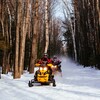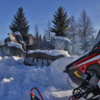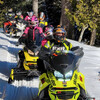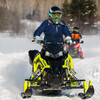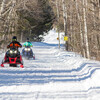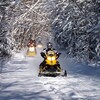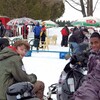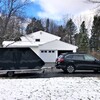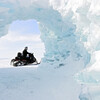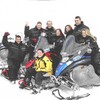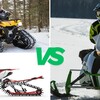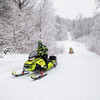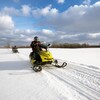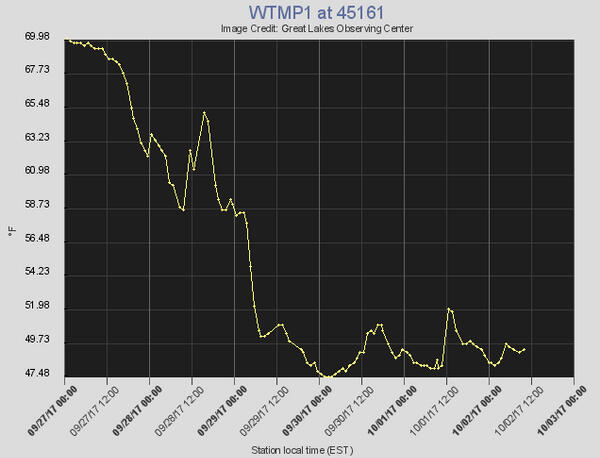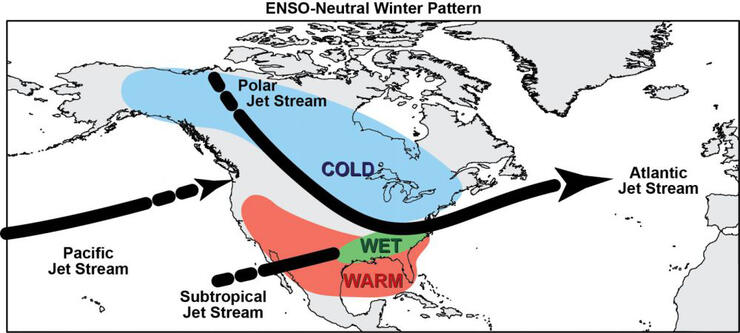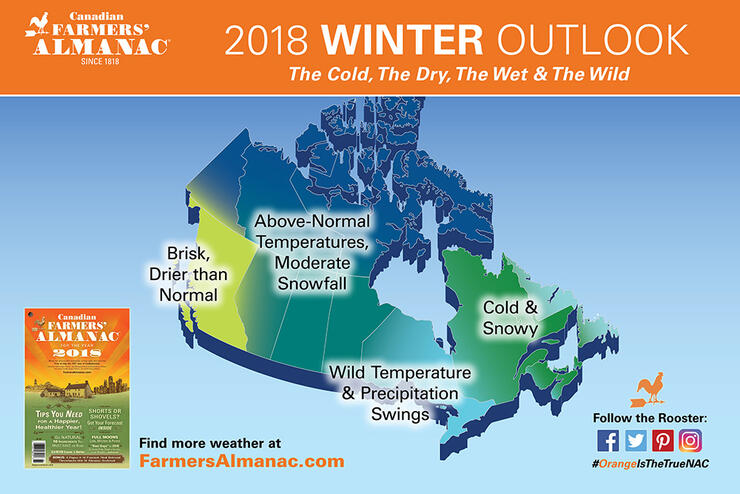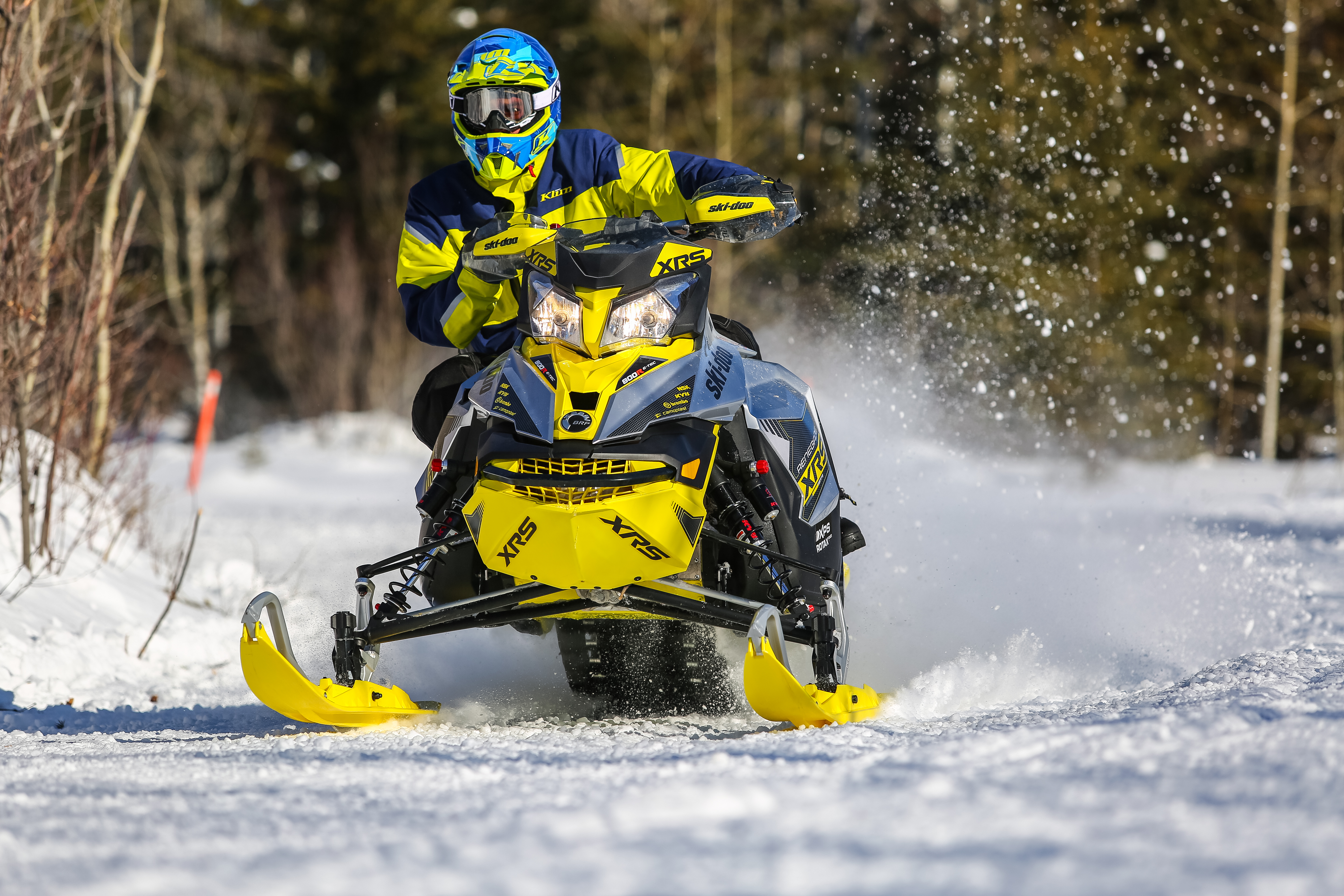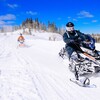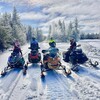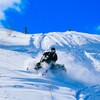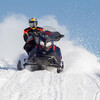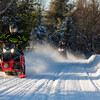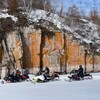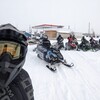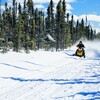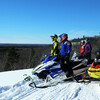
Ontario Snowmobilers in for a Great Season Ahead?
Our prediction for the 2019-2020 snowmobile season is out now! Click here to see what kind of winter we've got coming our way.
It's the fifth year for my comprehensively researched forecast on what snowmobilers can expect for winter in Ontario. This article is specifically for the diehard sledder who can't wait for the lakes to freeze and the trails to open! If the words "snow," "blizzard," "polar," "cold," "freezing temperatures," and "ice" get you warmed up, keep reading! If those words don't excite you, go back to knitting those woolly socks by the fire... you’re going to need them.
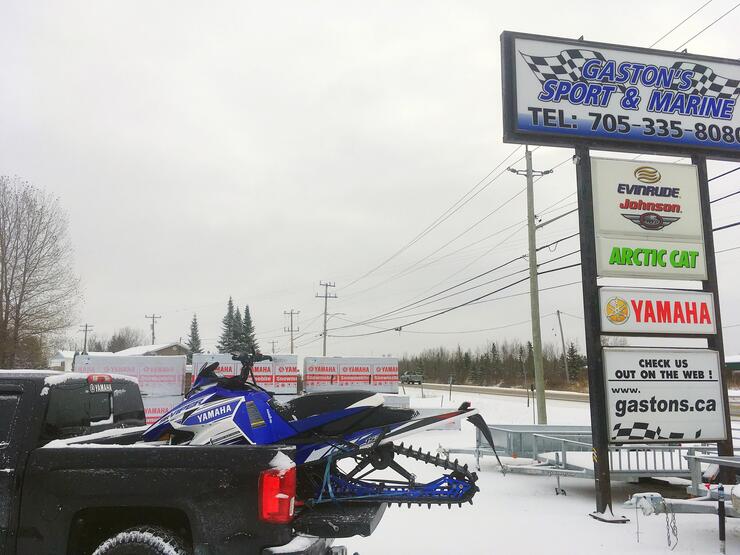
Five years ago, I wrote my first Ontario snowmobiler-specific winter forecast with the idea of compiling all the information you'd need in one article. Weeding out the irrelevant and sourcing the best material takes a lot of time and focus. Heeding the predictions from “trusted” meteorological experts and old-time prophesies like the Farmer’s Almanac, and on-the-ground knowledge from people in tune with our natural environment such as trappers, farmers, and winter adventurers alike.
I also took an in-depth look at recent events such as weather patterns, precipitation volumes, and even past and prevailing global patterns that directly affect weather and winters in Ontario.
The goal was to provide not only the basis and references for the formulation of my prediction on what the upcoming winter would bring, but also insight into what different corners of the province would produce weather-wise.
We all know that Ontario is massive: home to 32,000 km of OFSC trails, over 250,000 lakes and rivers, and an astounding abundance of wilderness to explore even, or especially, once the water freezes and the snow blankets everything.
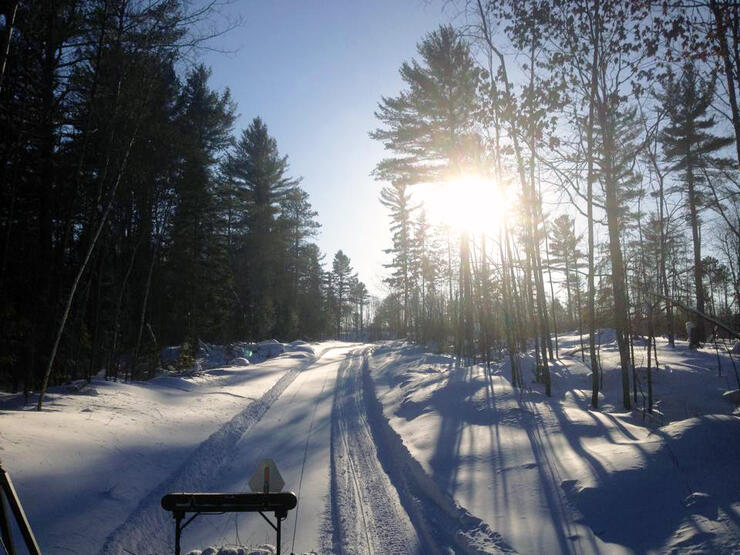
Looking back, I've been right as often as I've been wrong with my predictions. Where you ride largely determines how accurate my predictions have been—and this is because our province and diverse geography bring dozens of distinct winter regions.
Each year I do my best to come up with a solid province-wide prediction, providing you with the basis for my prediction so you can formulate your own prediction based on your own knowledge.
What the Experts Are Saying
An article published in the Globe and Mail about this past summer in Canada opens with “In Ottawa, people are saying it's the summer the sun forgot.” Environment Canada's Dave Phillips goes on to explain that the weather over this past summer across the country has been anything but ordinary.
This was the summer of rain—there were few days in July or August where it didn't rain at least for a few minutes. Even when it only rained for a short period, it tended to be a downpour. The summer of 2017 was decidedly cold, with the Toronto area experiencing only 7 days above 30°C in July and August. The hot and dry summer of 2016 is a marked contrast to this. Moving east towards the Ottawa Valley, precipitation records were broken. It was the second wettest summer on record, since we started keeping records in the 1880s. The in-plain-sight-prediction would be a continuation of the same throughout winter—cold and wet!
In my prediction for last winter, I referenced an article that provided stats on Great Lakes water levels, demonstrating that in 2016 the Great Lakes had returned to high levels that hadn't been seen since 1998. Another article by the same author, released this September predicts that Georgian Bay water levels may reach record highs in 2018 that could surpass the current record set in 1986.
It's no surprise that after this summer lake levels, including the Great Lakes, have continued to rise. All this water has had a major impact on our communities. The Toronto Islands were flooded, residents were evacuated, and a vast majority of the island remained closed to the public during the summer months. The flooding was brutal. Cottagers and marinas reported they were unable to put their docks in the water this spring due to extremely high water levels on inland lakes and rivers.
The September heat wave we all experienced was well-received by many—unless you were riding Canada’s toughest off-road motorcycle race, like me. Although many of us thoroughly enjoyed the warmest water temps of the summer, this late heatwave had little effect on overall water temperatures. Take a look at the chart below and you’ll see that once the heat wave ended, water temperatures quickly dropped by almost 6°C in just four days, with the fall lake cooling effect continuing.
The water isn’t as warm as you may think, which means it should both produce good snow and freeze quickly once the temperatures drop.
What Will La Niña Bring?
The National Oceanic and Atmospheric Administration (NOAA) recently issued a La Niña Watch for the fall and winter of 2017-2018, putting the chance of a La Niña event for this winter at 55 to 60%. La Niña events can drastically affect the seasonal snowfall for Ontario by shifting the jet stream northward into Alaska and the Yukon, making for a colder and more precipitous winter.
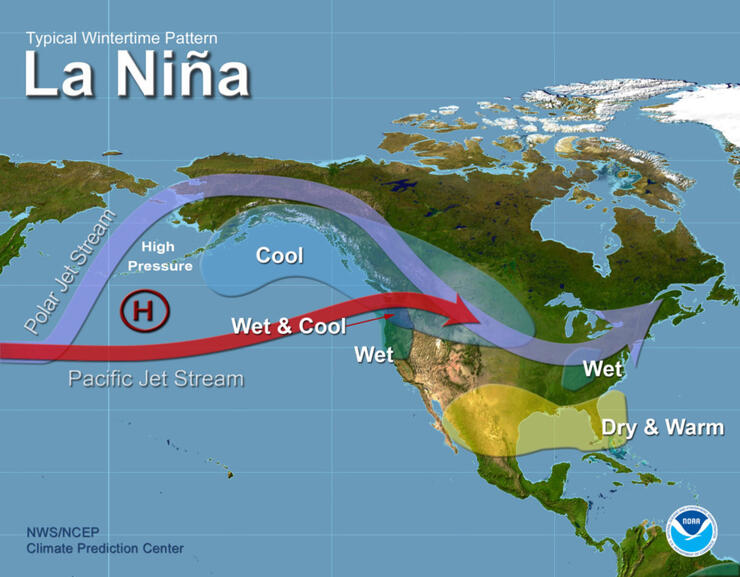
This percentage of a La Niña is directly driven by Pacific sea temperatures and scientists believe that sea surface temperatures will continue to cool, causing a strengthened Walker circulation—the characteristics of La Niña. Take a look at the maps below and you can see how La Niña will affect the jet stream and, subsequently, our winter here in Ontario. You can easily visualize when cool and wet air meet and channel over the Great Lakes that this produces an abundance of lake effect snow. Further to this, you can see how a jet stream in this position may draw down the Polar Vortex.
Tried and Tested
The Farmer’s Almanac has been at this for a long time. In the map below they predict wild temperature and precipitation swings. In the western areas of Ontario, we’re looking at above-normal temperatures, while in the east it’ll be cold and snow. Looking back at winter 2017, the Almanac predicted that the 2016-2017 winter would be “ice cold and snowy”... I'll let you make up your own mind as to whether they were right. This fall has been very cool in Northwestern Ontario, with snow on the ground and many lakes already starting to freeze. Yet in the south and east parts of Ontario, it’s been unseasonably warm, with many days in October reaching well above 15°C.
Being Prepared
It was shortly after Labour Day that I started seeing great enthusiasm for the coming winter. Riders were eagerly sharing stories of last season’s rides, chatting about epic trips, and, of course, sharing that they had ordered their Ontario Snowmobile Trail Permits. The OFSC experienced some challenges with the online permit system this year, but have rectified the issues and permits are again available for purchase online.
What amazed me about the whole permit purchasing experience was how many people were talking about buying permits. Good on you! Your permit is the best value in the sport; it’s a “membership” to 32,000 km of trails. Be proud that you support one of the greatest trail networks in the world—very few places have what we have. Remember, these are our trails, so consider lending a hand to a local club—you'll be amazed at what this network offers you back for your club contributions.
An Abundance of Predictions
This fall I've heard an incredible amount of talk about the pending season. Everyone is waiting with bated breath to see what’s to come. It’s going to be a long winter—so get your sled ready and stock up on long underwear.
Earlier this year my riding pal Ryan Tarrant released an article where he detailed his winter prediction. In short: lots of snow! And that lines up with the information I've gathered from the sources above. Ryan also drew attention to the fact that last season there was great riding in many parts of the province, which I experienced as well.
In The Woods
I recently reached out to a dyed-in-the-wool outdoors expert, Backroads Bill Steer. Bill is a professor of all things in the wild, from the rocks and trees to the birds and bees, and the lesser-known hidden gems that reside in Ontario's back-country. His blog details his great educational adventures.
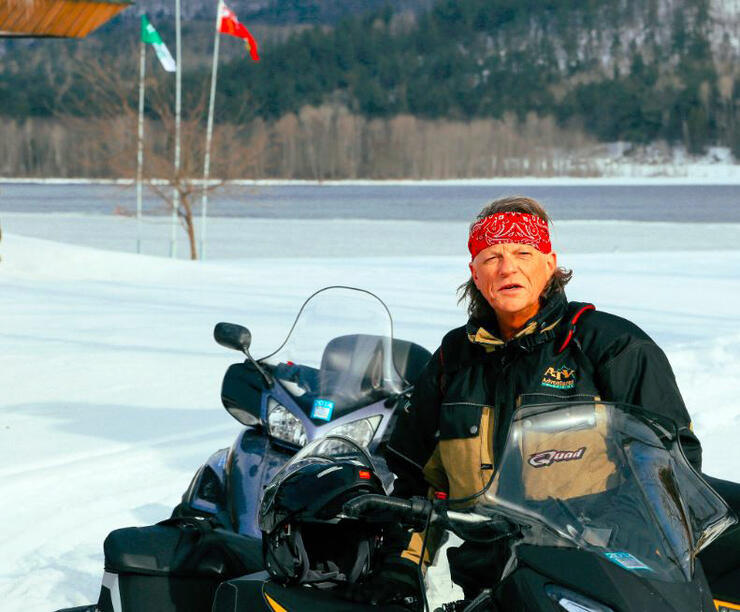
Bill’s perspective came from being in direct touch with the land. During his recent travels he saw that the beaver feed beds were still small, that the songbirds were still with us, and that the geese were still in low in the sky. In his educated opinion, this demonstrates that the animals are in no rush to prepare for winter. Humans and animals alike have a bit of time before winter starts, and we’ll enjoy a warm and dry fall. Bill also noted that he hasn't seen any ground wasps this year, as they've all been washed out by the abundance of rain. As for this winter—we all need be prepared for the wild weather. So make sure your vehicles and homes are prepared for emergencies—and don’t forget to get those snow tires on.
The Prediction
Big Lake Effect Snow
The Great Lakes water levels are up again, as are the inland lakes. We've got more than enough cool water in the Great Lakes to dump bountiful amounts of powder snow across the snowbelt sections of the province. Massive squalls will travel far and wide spreading white gold!
You will feel the Cold
It looks like El Niña is going to last throughout the winter season. If this sets up in early January and lasts through February we should be riding into May in the northern parts of the province
We need cold before snow and it looks like the jet stream will drift south below the great lakes allowing that cold air to move down for freeze up. I believe we're going to see a couple of polar vortex events this winter as the jet stream delivers lake effect snow then dips low, sending us into another deep freeze.
Old Man Winter vs. Mother Nature
Backroads Bill warns us we better be ready for wild weather this winter, as does the Farmer’s Almanac with their prediction of wild temperature and precipitation swings. The key word in both predictions is “wild.” Forecasters in touch with the wild are telling us we're in for a ride this winter. All this tells me is that we’re likely to see significant variations of winter in Ontario, meaning some areas may experience bitter cold while others are hammered with snow. The animals may be telling us this winter will come in like lamb and out like a lion. Please make ice safety a top priority this winter.
The Sledders Pulse
Snowmobilers are pumped for this season, sledding groups are busy with activity, sled shows are underway, and there’s a renewed focus on involving youth in our sport. Yamaha has brought back the SnoScoot which will, without a doubt, make this a winter to remember for many families. For those of us looking to log big miles, make sure to explore the refreshed and modernized version of the OFSC Interactive Trail Guide with a focus on Snow Tours, points of interest, and easy-to-use smart tools to help you plan those epic rides. Further to that, the OFSC tells us that this new version is just the foundation, with many more enhancements coming in the future!
the last word
I'm predicting a good old-fashioned Canadian winter, with cold, snow, and more cold. I’m thinking those in the southern parts of the province will have great local riding opportunities. The traditional snowbelt areas will receive near-record snowfall and the North will have great riding well into April. No matter what is to come, here in Northern Ontario winter will arrive and we will ride! If you have someone who can knit you those wool socks, now's the time to put your order in.
See you on the trails!
Recommended Articles
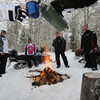
The Complete List of Snowmobile Events in Ontario 2025-2026

The Best Snowmobile-Friendly Lodges
Snowmobiling Winter Weather Forecast 2025-2026

I Rode the Explorers Snow Tour in Ontario and Here’s What It Was Like
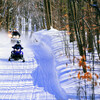
Why Ontario is One of the Best Snowmobile Destinations in the World
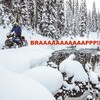
11 TikToks That Prove Ontario is the Best Place To Go Snowmobiling

5 Weekend Snowmobile Getaways Near the GTA
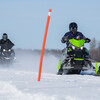
31 Ways To Get In The Know About Snowmobile Trail Riding in Ontario

A Beginner's Guide to Snowmobile Lingo

